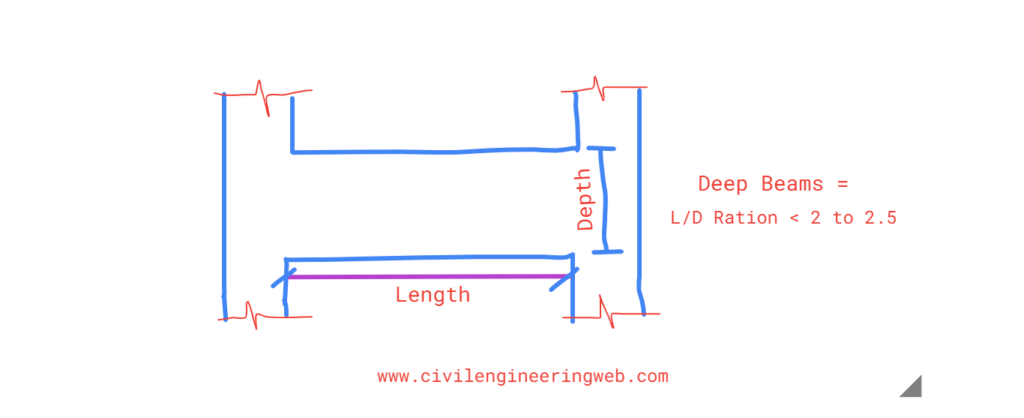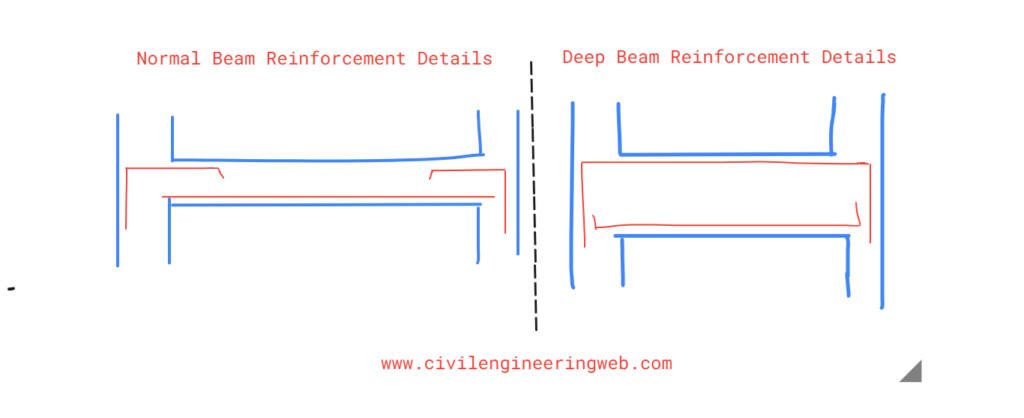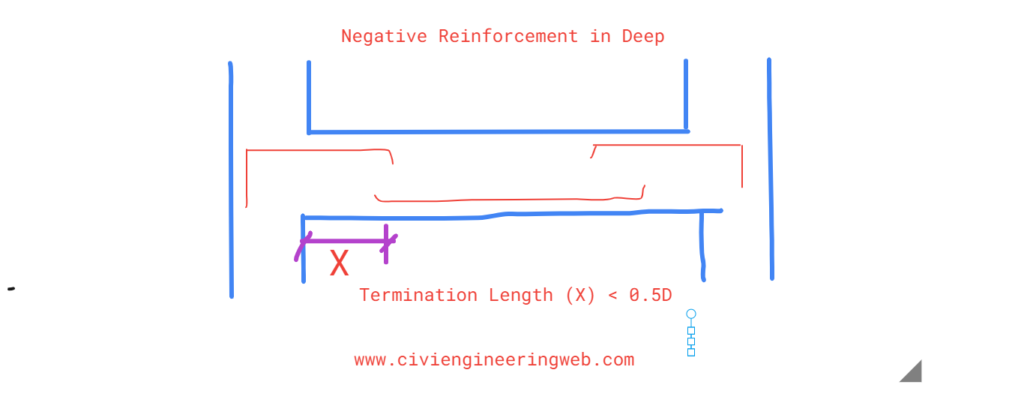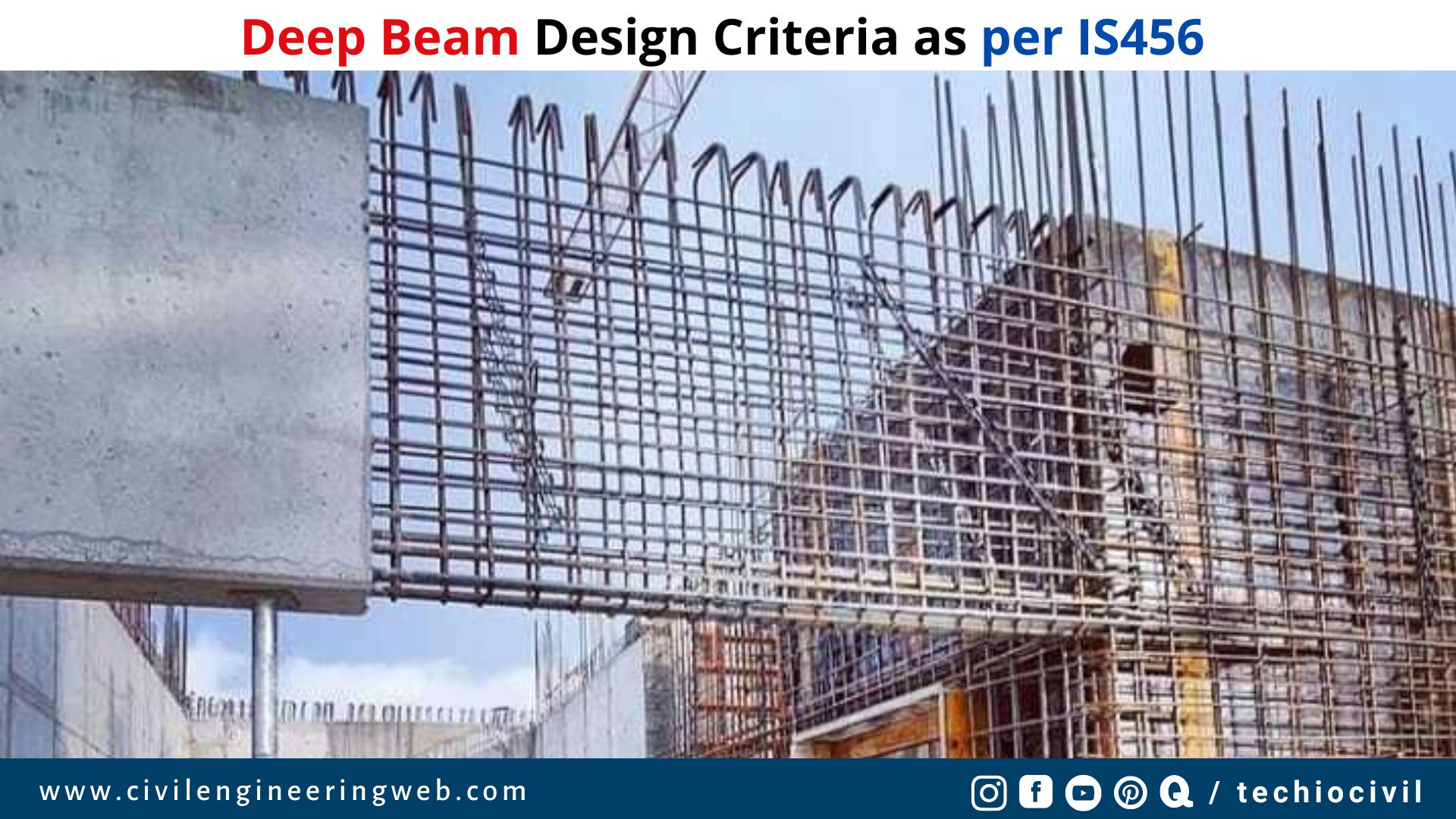In this article, we share the information regarding deep beam in structure, such as what is deep beam, deep beam design and reinforcement details criteria, etc.
So please read the article till the end, and if you get any valuable information from this article then please share it with your friends. Because sharing is caring. Let’s start
Table of Contents
What is Deep Beam
As per IS 456 Clause no. 29.1, Deep beam is defined as a beam which effective span to depth ration is less than 2.0 or 2.5. The ratio is depends on types of beam as mentioned below.
- For simply supported beam : 2.0
- For continuous beam : 2.5

A beam becomes a deeper when the loads on it is too high which result the high shear force and bending moment into the section. To resist the such too much forces, we increases the size of section while the length of beam is constant and leads deep beams in structure.
Deep beam is associated with high forces within the section. Due to high force in short length, shear force become critical factor in design of deep beam. As a result, deep beams are designed to withstand shear forces. While, due to their shorter span, it can effectively resist bending moments.
Usually, Deep beams comes in building where the column are placed closer and the load on beam is too high. Also it is used in girder and shear wall to transfer the heavy loads.
Also Read: Ductile Detailing of Column as per IS 13920-2016
Lever Arm Criteria For Deep Beam
The lever arm Z for deep beam shall be determined as below:
- a) For Simply Supported Beams:
- Z = 0.2 (L+2D), When L <= L/D < 2
- b) For Continuous Beams:
- Z = 0.5 L, When L/D<1
Where L is the effective span taken as center to center distance between supports or 1.15 times the clear span whichever is smaller, and D is the overall depth.
Also Read: Concrete Design Load Combinations as per ASCE-7 & ACI-318
Reinforcement Details for Deep Beam
Positive Reinforcement details for deep beam
The tensile reinforcement required to resist positive bending moment in any span of deep beam shall:
- Extend without curtailment between supports:
- Be embedded beyond the face of each support, so that at the face of the support it shall have a development length not less than 0.8Ld; Where Ld is the development length for the design stress in the reinforcement, and
- Be placed within a zone of depth equal to 0.25D – 0.05L adjacent to the tension face of the beam where D is the overall depth and L is the effective span.

Also Read: Arrangement of Transverse Reinforcement in Column
Negative Reinforcement Details in Deep Beam
- a) Termination of reinforcement: For tensile reinforcement required to resist negative bending moment over a support of a deep beam:
- It shall be permissible to terminate not more than half of the reinforcement at a distance of 0.5D from the face of the support.
- The remainder shall extend over the full span.

- b) Distribution: When the ratio of clear span to overall depth is in the range 1.0 to 2.5, tensile reinforcement over a support of a deep beam shall be placed in two zones comprising:
- A zone of depth 0.2D, adjacent to the tension face, which shall contain a proportion of the tension steel given by (0.5 (L/D – 0.5))
- A zone measuring 0.3D on either side of the mid-depth of the beam, which shall contain the remainder of the tension steel, evenly distributed.
- For span to depth ratios less than unity, the steel shall be evenly distributed over a depth of 0.8D measured from the tension face.
Also Read: 5 Best Structural Design and Analysis Software
Vertical Reinforcement details in deep beam
If forces are applied to a deep beam in such a way that hanging action required, bars or suspension stirrups shall be provided to carry all the forces concerned.

